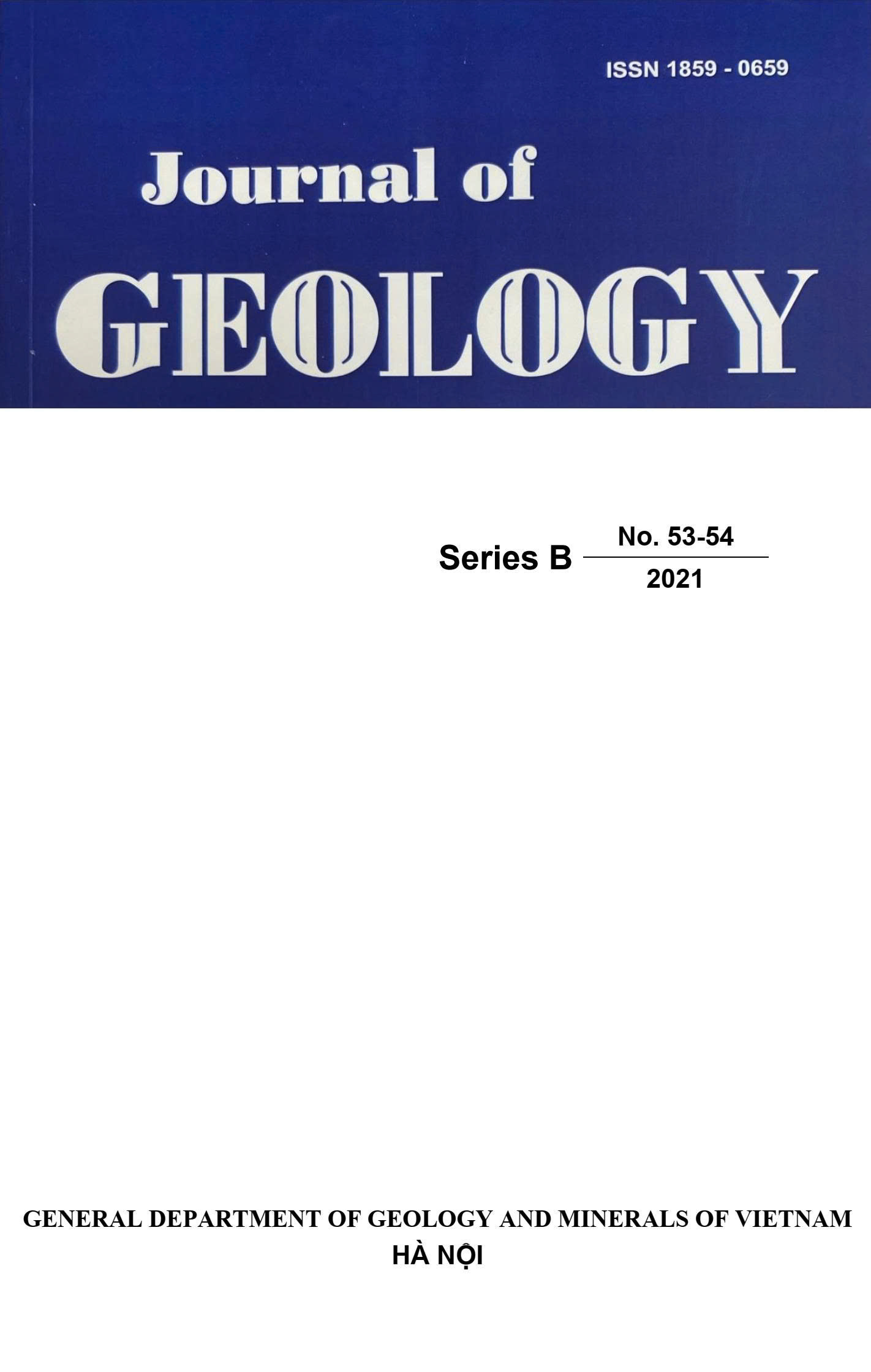Tóm tắt
The content of the article introduces the evolutionary history of Quaternary sediments of the Red River Delta taking place in 5 cycles based on analysis and comparison of the sedimentary composition of 2 boreholes BH4-HN in the Gia Lam area (Ha Hoi City). Noi and BH56-ND Hai Hau area (Nam Dinh province). In both Quaternary boreholes, there are 5 cycles with a causal relationship with 5 cycles of global sea-level change due to the influence of 5 glacial/interglacial cycles: (1) Gunz/G-M has an early Pleistocene age (Q11); Mindel /M-R has early middle Pleistocene (Q12a); Rise/R-W1 has late middle Pleistocene (Q12b); Wurm1/W1-W2 has early late Pleistocene (Q13a); Wurm2/Flandri transgression has late late Pleistocene to Holocene (Q13b-Q2). Each cycle is characterized by three facies complexes: (1) the lowstand alluvial gravelly sand facies complex (SgarLST); (2) the transgressive lagoon sandy mud and mud facies complex (Msamt, mtTST); (3) the highstand deltaic facies complex (MsamhHST). However, comparing the two boreholes BH4-HN and BH56-ND, the difference is seen as follows: (1) for borehole BH4-HN, the sediment thickness of the cycles tends to decrease gradually from Pleistocene to Holocene, while the borehole BH56-ND has the opposite variation; (2) in Pleistocene cycles C2, C3, and C4 have a thickness similar to these 3 cycles in borehole BH4-HN; (3) Cycle C5 of BH56-ND has a thickness of 56m, a sudden increase compared to 30m in borehole BH4-HN. During the Pleistocene period on the entire plain, tectonic subsidence occurred with uniform amplitude and during the Holocene in the Nam Dinh area, i.e. downstream river channel, the subsidence amplitude was more than in the Hanoi area, i.e. the midland river channel.

